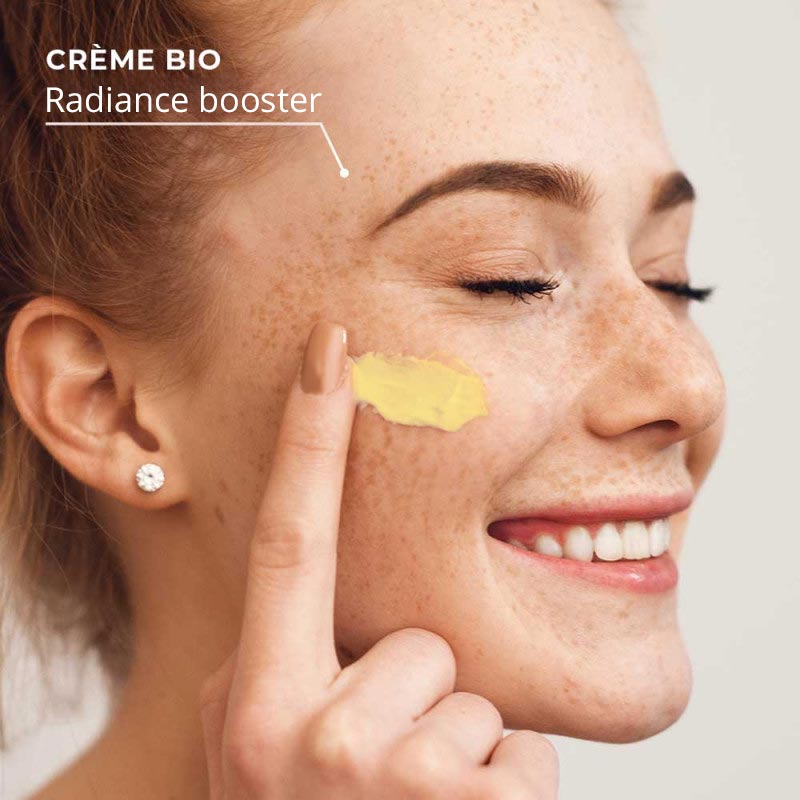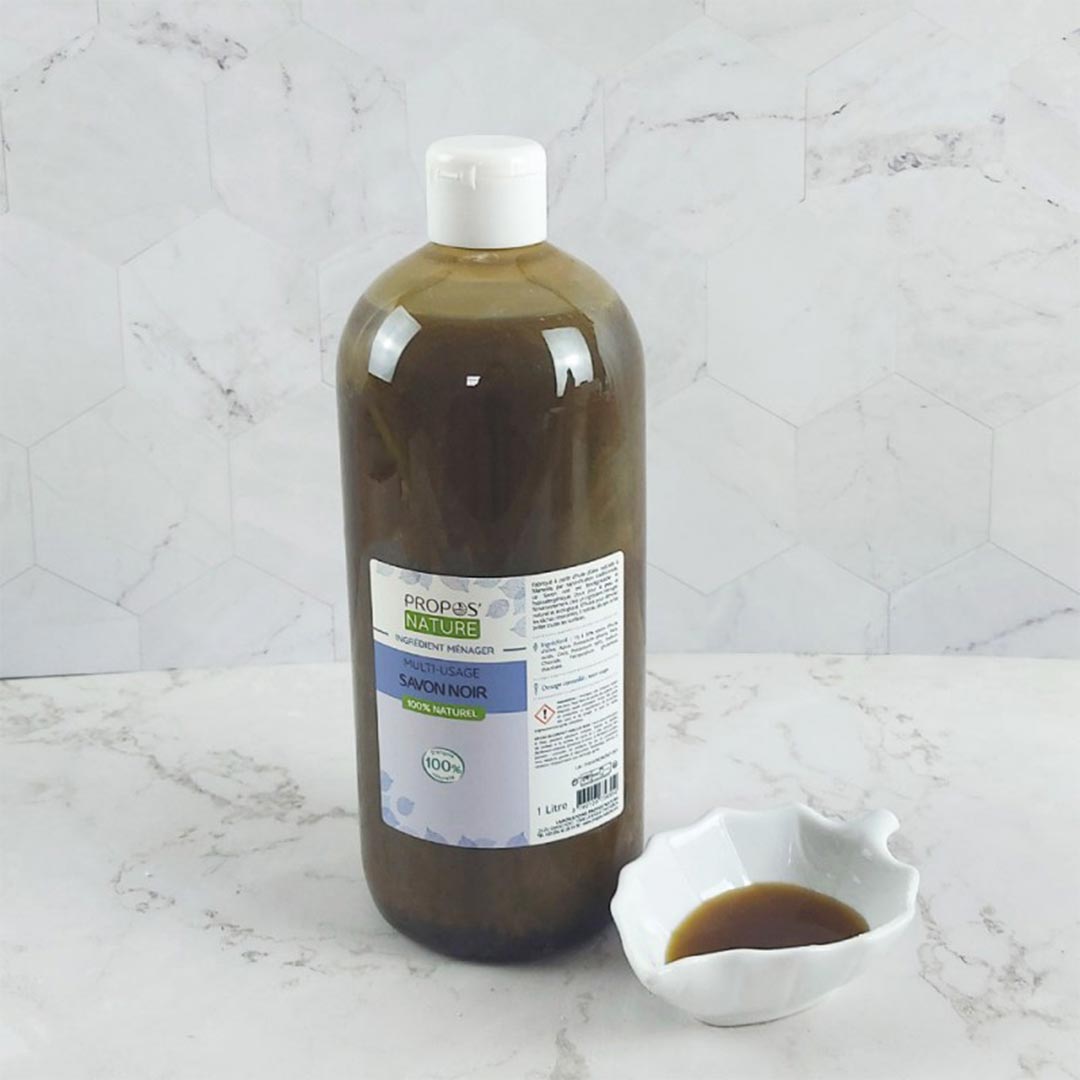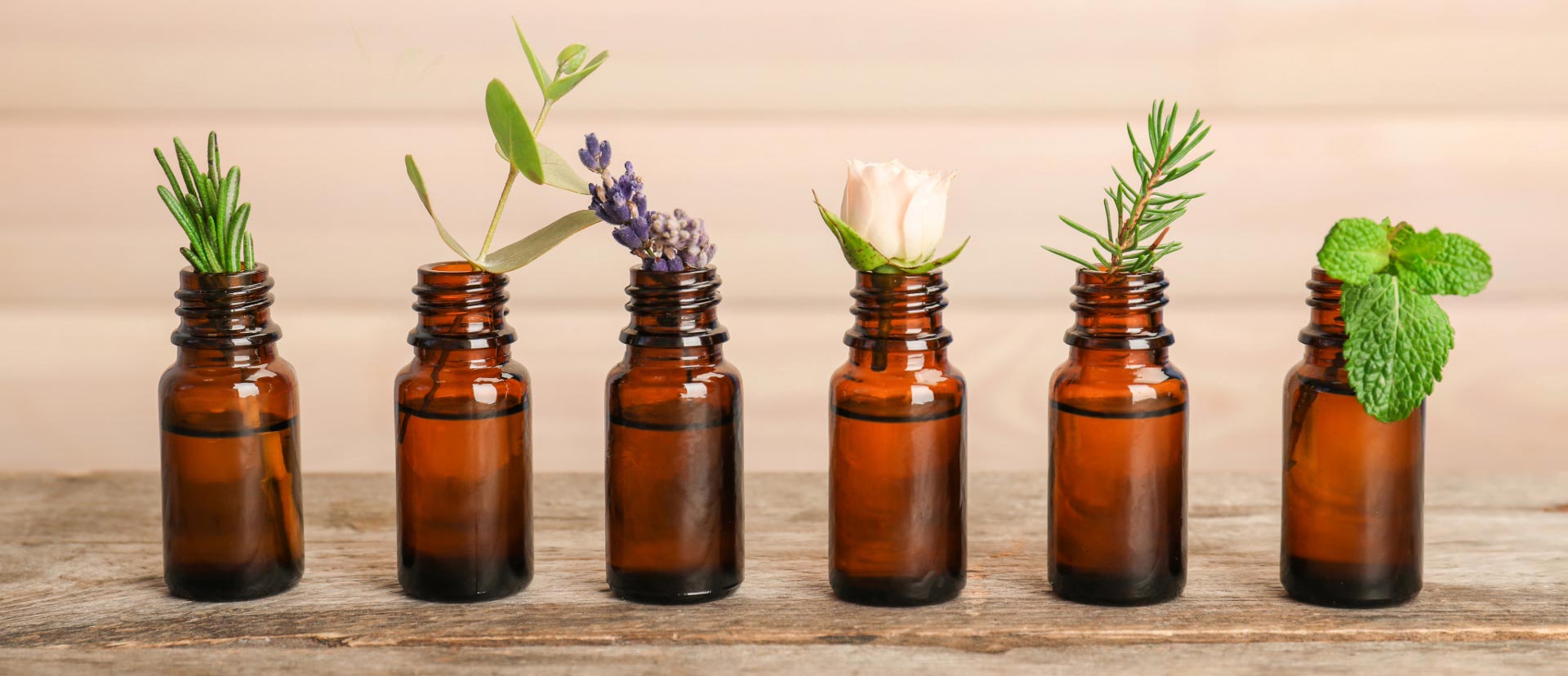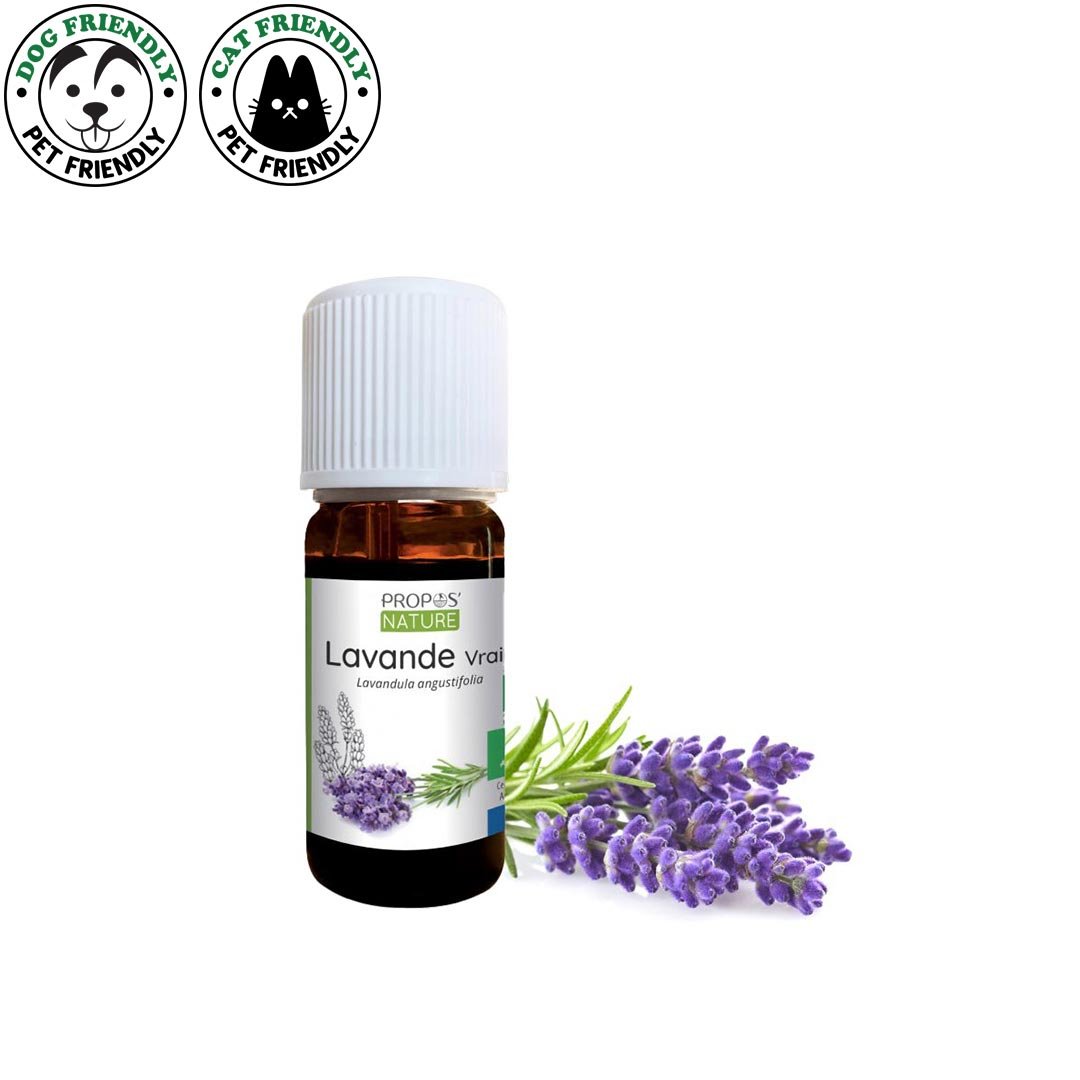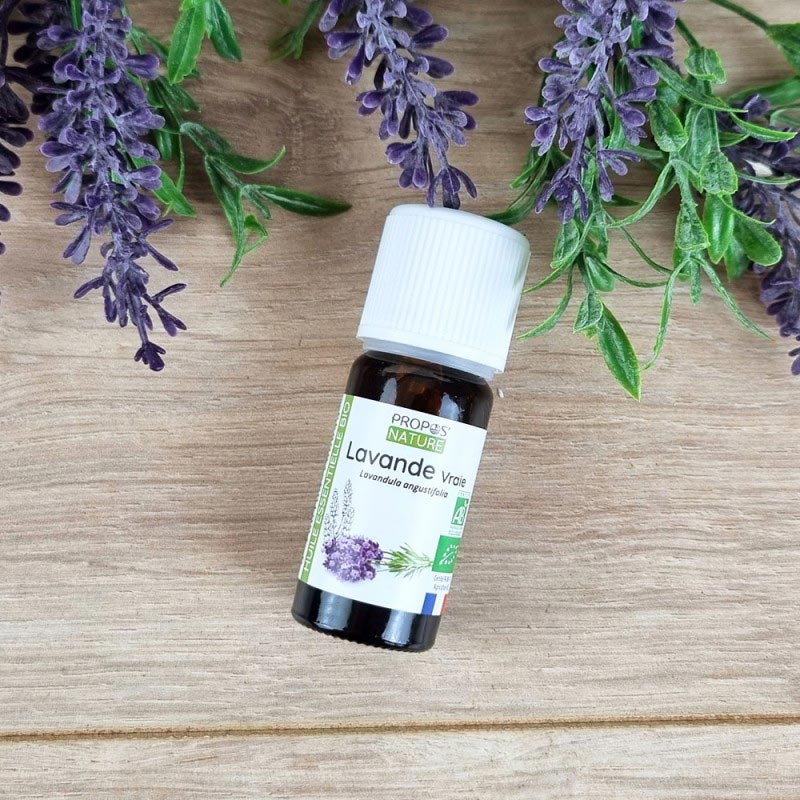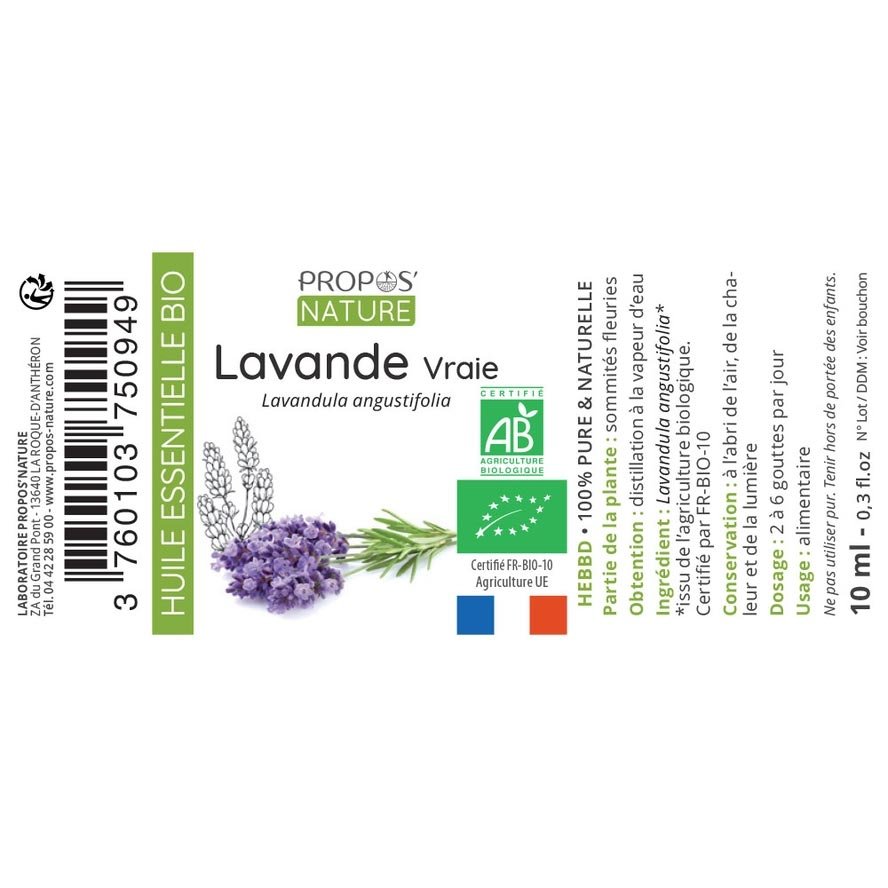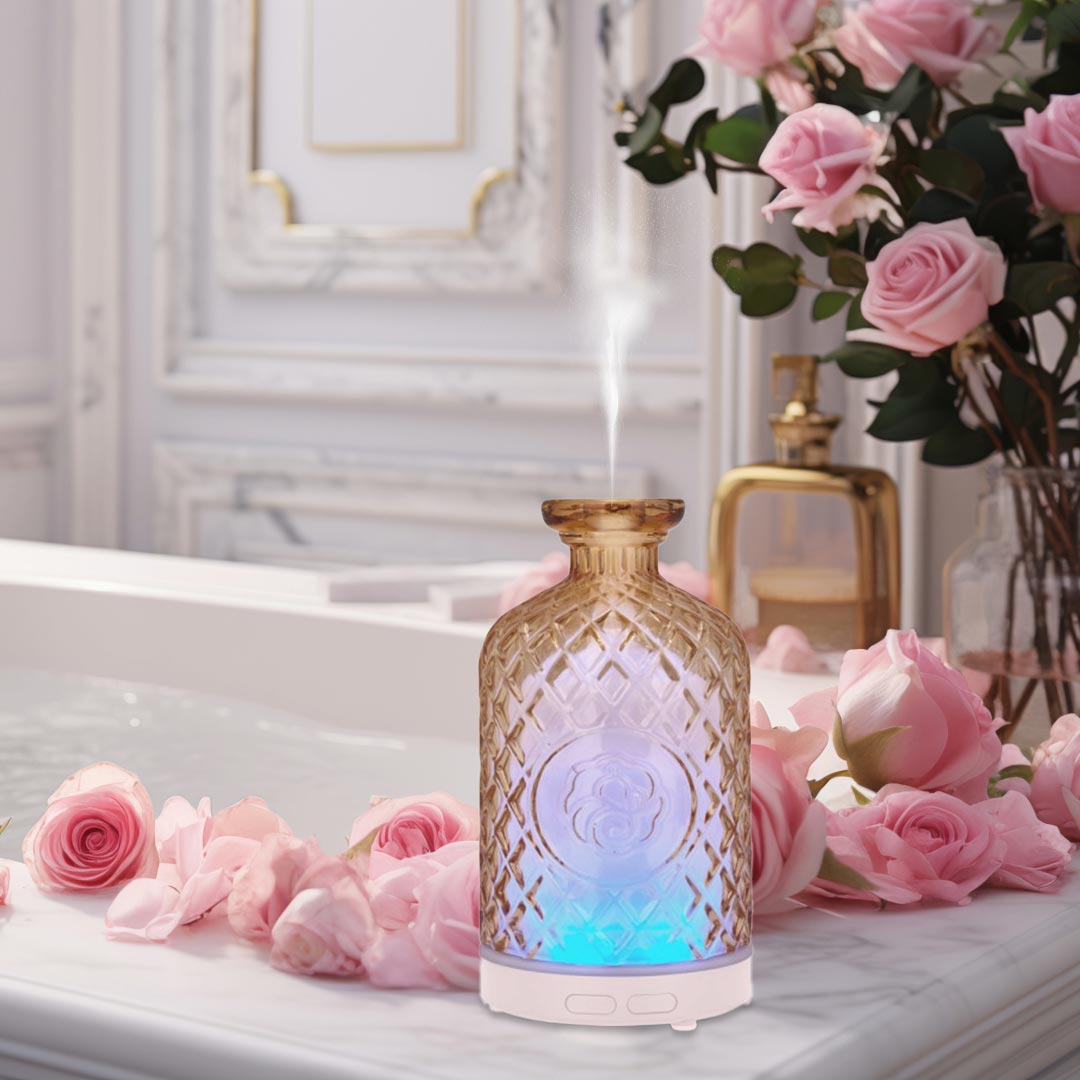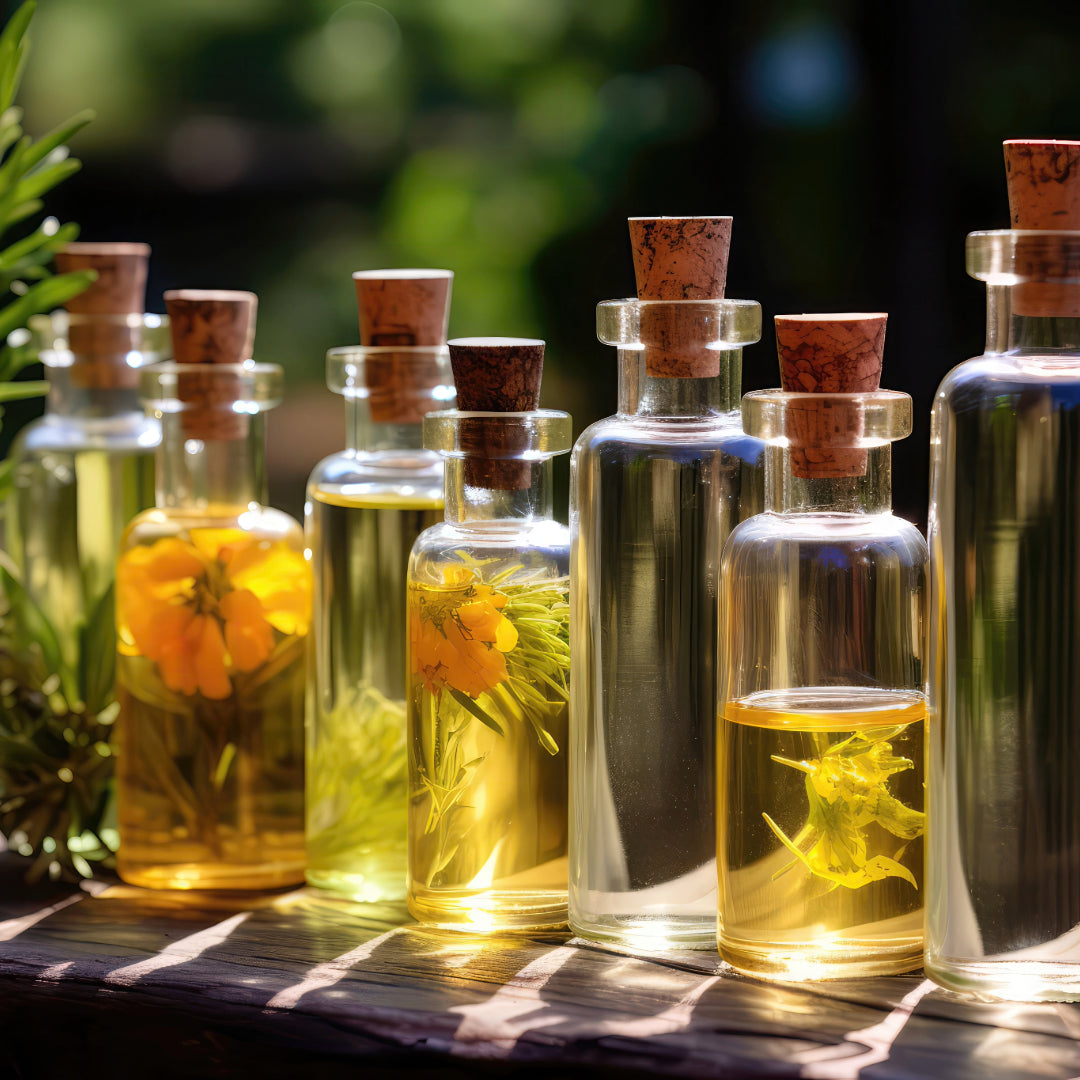Exclusive Guide to Lavender Essential Oil

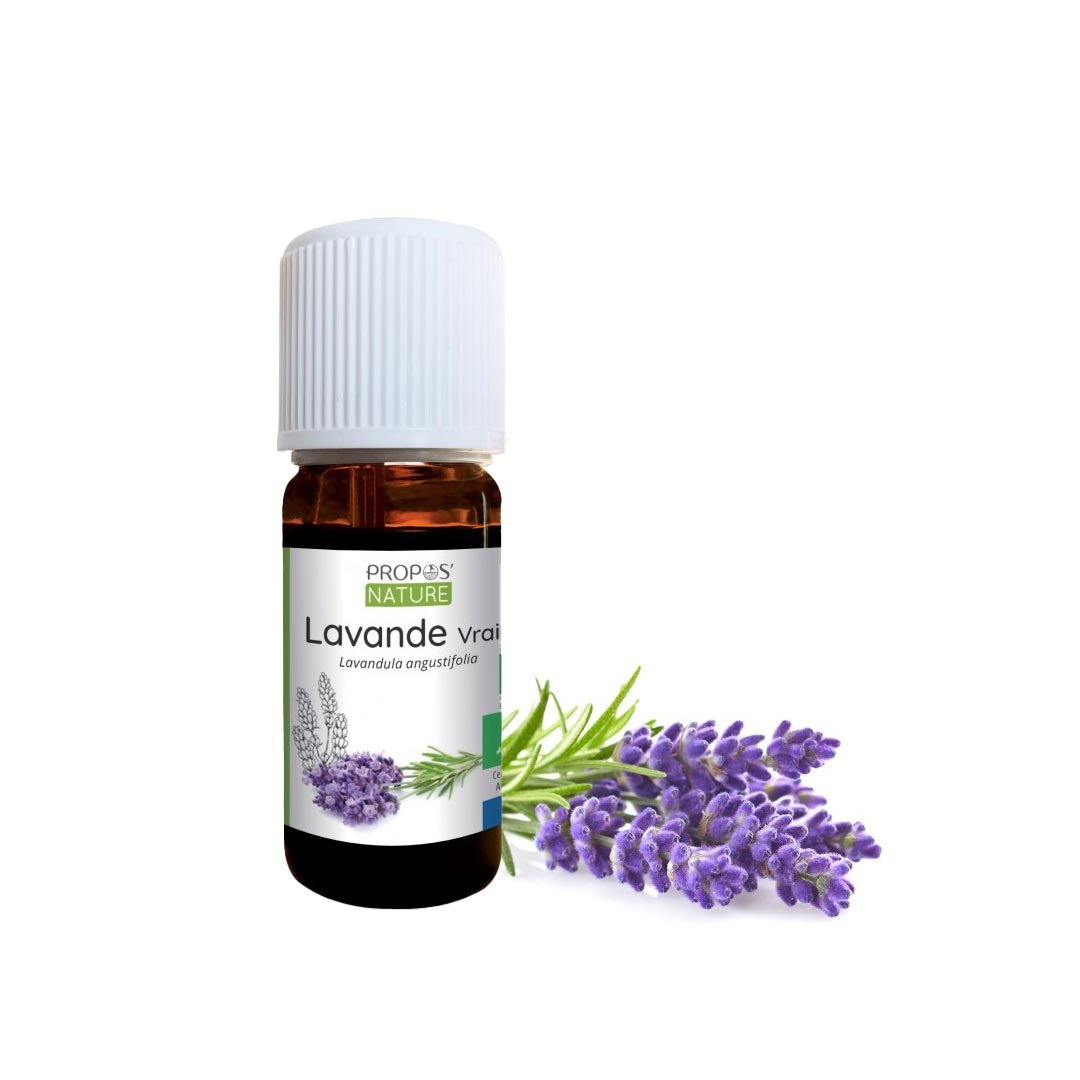
Lavandula Angustifolia
Origin: Bulgaria
Distilled part: Flowering tops
Extraction method: Steam distillation
Cultivation: Certified Organic farming
Botanically and Biochemically Defined Essential Oil (HEBBD), chemotyped (HECT)
Color: Pale yellow
Scent: Fresh, floral
Note: Middle note
Plant Family: Lamiaceae/Labiatae




SUPER POWERS
Analgesic
- pain killer, reduces pain
Anthelmintic
- destroys parasites, worms
Antibacterial
- kills bacterial growth or prevents bacteria from growing
Antidepressant
- lifts the symptoms of depression such as low moods and sadness
Anti-infectious
- prevents or treats an infection
Anti-inflammatory
- reduces inflammation and swelling
Antimicrobial
- antibacterial, antifungal, and antiviral properties
Antiseptic
- prevents or combats bacterial infection
Antivenomous
- treats certain venomous bites and stings
Calmative
- sedative calming effect
Cicatrizing
- heals a wound by the formation of scar tissue
Cytophylactic
- a cell regenerator and a protector of the cells of an organism
Sedative
-reduces mental excitement or irritability, and reduces physical activity
Vulnerary
- helps wounds to heal

USAGE TIPS

Relax & Induce Sleep
Use in your diffuser for calming the body and mind, as well as relaxation and when going to sleep. Fantastic to start diffusing in the bedroom sometime before going to bed!
Put 4-8 drops of lavender in your diffuser to relax and unwind.

Insect repellent
Mix 10 drops of lavender essential oil with 5 drops of eucalyptus oil in 2 tablespoons (30ml) of carrier oil (Jojoba oil), and rub on your skin. Repeat every 2 hours.

Insect Bites & Bee Stings
Put 1 drop of Lavender directly on the bug bite and gently rub it in. Repeat several times daily to help reduce itching and swelling.

Wounds
A single drop of lavender essential oil diluted in 1/2 teaspoon (2,5 ml) carrier oil and applied to a minor cut can kill bacteria while also helping to stop the bleeding and heal the wound.
Food
Food flavoring (FEMA n°: 262 / CoE n°: 257n)
Food dosage: 1 drop in a dish for 5 people (never exceed 2%)
Always use essential oil diluted in a suitable medium (example: vegetable oil, honey, etc.)

Hyperactivity
Add 5-10 drops in your diffuser to instil feelings of peace, calm, and relaxation. Whether you are suffering from a hyper or overactive mind or body, this will help you relax. You can also dilute 5 drops of lavender oil with 1 teaspoon (5ml) of carrier oil, and add to a warm bath.

Burns
For minor burns, promptly apply 2-3 drops of lavender oil directly to the affected area. Lavender oil is known for its pain-relieving properties and can help prevent blistering. While it might take a few minutes for the stinging sensation to decrease, stick with it—the benefits are well worth the wait.

Blemishes
Apply 1 drop of lavender oil directly on a blemish or pimple. This will help destroy bacteria, reduce inflammation and redness, and prevent possible scarring.

Cold Sores
Place 1 drop of lavender oil directly onto a cold sore using a cotton swab. Lavender oil is effective in treating and healing cold sores, because of it's powerful antiviral properties.

Dandruff
Add 12 drops of lavender oil in 2 tbs. (30ml) of coconut oil, and massage onto the scalp. Leave for 40 minutes, and thoroughly rinse your hair. Lavender oil helps to replenish lost moisture in the scalp, and it effectively clears dry, flaky skin.

Dry Skin
Add 4 drops of lavender oil with 1 teaspoon (5ml) of coconut oil, and massage into the area of concern. Repeat daily morning and evening. Lavender oil is an effective treatment to use on dry skin conditions such as dermatitis and eczema. It helps to reduce inflamed skin, soothe irritation, and speed up the healing process.

Earache
To help relieve the pain and discomfort of an earache, gently massage 1 drop of lavender oil behind each ear. Never pour the oil directly into the eardrum

Fabric Conditioner
Add 8 drops of lavender oil in your unscented natural fabric conditioner to freshen your clothes and create a beautiful, natural scent.

Cystitis
Mix 5 drops with 1 tbs. (15ml) of carrier oil, and add to a warm bath. Soak for 20 minutes. This will help relieve stinging, inflammation, and the pain associated with cystitis.

Digestion
Lavender oil is fantastic for boosting digestion—it acts as a tonic, supporting the entire digestive tract. Add 4 drops to 1 teaspoon (5ml) of carrier oil, and massage into the abdomen clockwise.

Closet Freshener
Place 2 drops of lavender oil on a cotton ball, and place in your closet and drawers to repel insects and moths. It also creates a very pleasant fresh scent in your wardrobes.

Fever
Lavender oil helps to break the fever by reducing the temperature of the body, and it also fights the infection causing the fever. Add 4 drops to 1 teaspoon (5ml) of carrier oil, and massage into the soles of the feet. You can also add 4 drops to a steam inhalation.

Headaches
Place 1 drop of lavender oil on each temple to ease the pain. The analgesic action of lavender oil, as well as its relaxing effect on the nervous system, makes it an effective treatment for headaches.

Insomnia
Lavender oil works wonders for calming the nervous system, making it a perfect choice for anyone struggling with insomnia. Try placing 2 drops on your pillow before bed, or diffuse 3-5 drops in your bedroom to help ease you into a peaceful sleep.
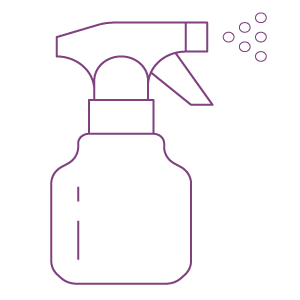
Linen Spray
To keep your fabrics smelling fresh, add 15 drops of lavender oil to a 300 ml spray bottle filled with filtered water. Spritz this on sheets, pillows, towels, and curtains for a lovely, refreshing scent.

Menstrual Cramps
Add 4 drops of lavender oil to 1 teaspoon (5ml) of carrier oil and gently rub it into the lower abdomen. Or, add 3 drops to a hot compress and drape it across your abdomen. Lavender oil is superb for soothing uterine spasms and alleviating cramp pain.

Motion Sickness
Lavender oil is great for soothing an upset stomach and effectively dispelling feelings of nausea. Simply place 2 drops on a tissue and inhale regularly throughout your journey to feel better.

Muscular Aches & Pains
Lavender oil, with its anti-inflammatory and analgesic properties, is excellent for soothing aching muscles. Dilute 7 drops of the oil with 1 tablespoon (15ml) of carrier oil and add it to a warm bath for a relaxing soak. Alternatively, mix 5 drops with 1 tablespoon of carrier oil and massage directly into the affected muscles for relief.

Rashes
Lavender oil is effective at reducing inflammation, easing the sting of rashes, and alleviating itching. It can also help prevent pimples from becoming infected. Mix 5 drops with 1 tablespoon (15ml) of coconut oil and gently massage it into the area of concern for soothing relief.

Scar Tissue
To help reduce the appearance of scar tissue, blend 3 drops of lavender oil with 1 teaspoon (5ml) of coconut oil and gently massage it into the area. This mixture can also be used to minimize the formation of scar tissue on recent cuts or wounds. Apply it twice daily for best results.

Shingles
For larger areas, mix 6-7 drops of lavender oil with 1 tablespoon (15ml) of coconut oil and massage into the affected regions. For smaller areas, blend 3-4 drops with 1 teaspoon (5ml) of coconut oil. Lavender oil possesses powerful antiviral properties that help combat the herpes virus, while also reducing inflammation and alleviating pain.

Sinusitis
Lavender oil is great for clearing congested nasal passageways and making breathing easier. Simply add 4 drops to an inhaler or use it in a steam inhalation.

Sunburn
Lavender oil is excellent for soothing the stinging and burning sensations associated with sunburn. It also helps prevent blistering and potential scarring. Mix 5 drops of lavender oil with 1 teaspoon (5ml) of coconut oil and gently apply it to the affected area. Alternatively, add 15 drops to a 200ml spray bottle filled with water and spritz the area several times a day for relief. Remember to shake the bottle before each use.

Swollen Feet
Add 4 drops of lavender oil to a foot bath and soak for 20 minutes. Lavender oil is wonderful for easing and stimulating blood circulation around the feet and ankles.

Toilet Roll Fragrance
Place 2-3 drops of lavender oil on a new roll of toilet paper. Each time the paper is used, the fresh scent of lavender will be released, refreshing your bathroom.

Vaccum Cleaner
Add 3 drops of lavender oil to the filter of your vacuum cleaner. If your vacuum doesn't have a filter, you can put the drops on a cotton ball and place it inside the disposable bag. Each time you vacuum, the delightful scent of lavender will infuse the room.

Refresh Waste Bins
Place a paper towel or cotton pad at the bottom of your bin. Add 4-6 drops of lavender oil onto the paper towel or cotton pad, and allow the oil to keep your bin fresh and germ free. You can also mix lavender with lemon or orange essential oil.

Sunburn
Mix 3 drops of lavender oil with 1 tablespoon (15ml) of aloe vera gel, and apply to the sunburned area. Repeat as often as you feel like it.
If you prefer a carrier oil, use Sweet Almond oil, Avocado, or Coconut oil.

Stress
It's estimated that stress underlies 75% of diseases, underscoring the importance of managing it effectively. One of the most relaxing ways to unwind from stress is through a bath enhanced with essential oils. Simply add 8 drops of lavender oil to 1 tablespoon (15ml) of carrier oil, shake well to mix, and then pour into your bath water. Swirl the oils around to disperse them evenly. Soak for 20-30 minutes to enjoy a truly calming experience.
Skin type
Lavender can be used alone or in blends for these skin types:
- Balanced/Normal
- Aging
- Dry
- Oily
- Blemished (pimples, acne or other)

Skincare
Lavender essential oil is a treasure in the realm of skincare, revered for its versatile benefits that cater to a variety of skin types and conditions. Its soothing properties make it a standout choice for calming sensitive skin, reducing redness, and alleviating irritation.
- Soothing Properties: Lavender oil is excellent for calming sensitive skin, reducing redness, and alleviating irritation. Its gentle action makes it suitable for all skin types.
- Anti-Inflammatory Benefits: Effective for conditions like acne, eczema, or psoriasis, lavender oil helps to soothe skin flare-ups and reduce discomfort due to its anti-inflammatory effects.
- Antiseptic Abilities: It cleanses the skin of bacteria and impurities, helping to prevent and heal acne breakouts.
- Healing and Repair: Lavender oil promotes the healing of skin tissue, useful for sun-damaged skin, scars, and acne marks by stimulating cell growth and improving skin regeneration.
- Anti-Aging Properties: Contains antioxidants that protect against free radicals, reduce fine lines, and help maintain skin's elasticity. It also moisturizes the skin, balancing sebum production and improving skin texture.
- Easy to Incorporate: Add a few drops to your daily un-fragranced moisturizer or serum, use diluted in a cleansing routine, or as part of a soothing mask.
- Aromatherapy Benefits: The calming scent of lavender oil reduces stress and promotes relaxation, enhancing the overall skincare experience.
Method of use & Amount to use
Aroma diffusers
Use 5-15 drops in your diffuser or the amount suggested with your diffuser.
Baths, Hot tubs, Jacuzzis
Bath: Diluted 3-8 drops
Start by running your bath as you normally would and keep the bathroom door closed to retain the aroma. Essential oils can be applied directly in their concentrated form or diluted.
For dilution, use a carrier oil, milk, milk powder, vegetable glycerin, seaweed powder, herbal powder, baking soda, salt, or Epsom salts to prevent skin sensitivity.
Add the essential oil to the bathwater, either neat or diluted, then stir the water with your hand to disperse the oil evenly before entering the tub. This method helps distribute the essential oil throughout the bath for a more enjoyable experience.
Hot tubs & Jacuzzis: up to 8 drops
Mix the essential oil into the water thoroughly using your hand. Since essential oils do not dissolve in water, they may leave residues in or around your pipes.
Compresses
3-10 drops in 120 ml of water
Learn more
Face masks, oils, and tonic
Face masks: 1 or 2 drops per 2 tbs. (15ml) of natural facemask.
Face oils: 12 drops in 30ml of carrier oil. For elderly and children use 6 drops per 30ml of carrier oil.
Use a dark-colored glass bottle, which helps protect your oils from light degradation. First, pour in the carrier oil. If you’re using a single essential oil or a premixed blend, add it directly to the carrier oil. If you’re crafting your own unique blend, mix your essential oils together first, then integrate the desired number of drops into the carrier oil. Remember, a little goes a long way, so only use a small amount for each application. Click here to read more about which carrier oil to choose.
Face tonic: 8-15 drops in 100ml of spring or distilled water or hydrosol.
Combine the oil and water before filtering through an unbleached paper coffee filter.
Our 100% organic and natural hydrosols can be used directly as a tonic. Shut your eyes and spray your face. Or spray a cotton pad and wipe your face with it.
Inhalation from bowl
3-5 drops per bowl of steaming hot water.
To use essential oils in steam inhalation, start by bringing a pot of water to a boil and then removing it from the heat. Add a few drops (typically 3-5 drops) of your chosen essential oil to the hot water.
Carefully lean over the pot, drape a towel over your head and the pot to trap the steam, and breathe deeply for several minutes to inhale the aromatic vapors, which can help relieve nasal congestion and other respiratory issues.
Lotions & Creams
12 drops to each 30 ml of natural, unfragranced lotion or cream.
You can make your own face cream with our neutral face cream as a base. For a 2% (adults) dilution use 40 drops in this 100 ml cream base.
For elderly and children use 20 drops (1%) in 100ml of cream.
Massage oil (for body)
12 drops to each 30 ml of carrier oil.
For elderly and children use 6 drops per 30ml of carrier oil.
Pillows
Place 1-3 drops of essential oil on the corner or underside of a pillow away from the eyes.
Room sprays
As room purifier: 10-20 drops per 475 ml of water.
As a general fragrance: 8-10 drops per 475 ml of water.
Scalp treatments
Add 6 drops in 15 ml of Jojoba oil or aloe vera gel. Shake well. Use 2-3 drops of your prepared blend for each application. Massage into your scalp. Alternatively, simply add the essential oil to a bottle of final rinse water after washing the hair.
Shampoos
5-10 drops in 100ml.
Essential oils can be added to any unscented shampoo that is composed of organic natural ingredients.
Showers
1-5 drops.
First, complete your usual washing routine. After that, apply a few drops of essential oil onto a washcloth or sponge and briskly rub it over your body while standing under the shower's running water. Inhale deeply through your nose to enjoy the aromatic steam, being careful to avoid applying the oil on your face and sensitive areas.
Sprays & Mists for Face and Body
For body: 10-20 drops to each 475 ml of water or hydrosol.
For face: 2-5 drops to each 240 ml of water or hydrosol.
Add the essential oil to warm water or hydrosol. Shake thoroughly, pour through an unbleached paper coffee filter, and place in a spray bottle. Cool before using.
Shake before each use.
Keep eyes closed when spraying the face.
Washes
15-32 drops in 240 ml of warm water.
A wash is a prepared mixture for washing infected areas such as cuts, grazes, and wounds.
Mix the essential oils and water together in a bottle and shake well. Keep it stored in the fridge for no longer than 14 days. Shake before each use.

Aromatherapy's middle notes:
Aromas categorized as middle notes are typically warm, rich, and powerful. Their scent lasts for two to three days.
The body is highly receptive to these fragrances, making them ideal for healing and relaxation. Soothing and restorative.
Middle notes are ideal for healing treatments that require repeated sessions, such as for chronic muscle pain or respiratory issues. They are also effective for treating migraines, PMS, and menstrual pains.
Some middle notes should not be used during pregnancy, so check each oil before use.
Typical middle notes:
Floral oils: Chamomile, geranium, lemon balm
Warm spicy oils: Clove, nutmeg, anise, black pepper
Herbaceous oils: Fennel, juniper berry, marjoram sweet, rosemary
Understand the Notes of Scents
In aromatherapy, the scent of an oil is often referred to as a "note." The secret behind a truly great fragrance is finding the perfect balance between the notes. Aromatherapy is about scents, and with practice, you will be able to recognize an oil's fragrance even if you might not know which plant the oil comes from. For example, you will be able to distinguish between citrus and floral scents or woody and minty fragrances. The scent is determined by the chemicals an oil contains. Because oils that smell alike often contain the same chemicals, they typically have similar properties.
Oils are categorized into so-called base, middle, and top notes. Knowing an oil's note is important when blending oils. A good blend—like most perfumes—normally contains a mix of all three notes, where the ratio between them varies depending on what the blend is used for. Additionally, an oil can contain more than one note—for example, ylang-ylang contains traces of all three notes and is often considered the perfect fragrance.
When creating a new fragrance, whether it's for a perfume or an aroma diffuser, you should use between 4-7 oils per blend. First, decide what type of blend you want to create, such as a refreshing one, and then choose notes with these characteristics to make up the main content of the blend. Dissolve the mixture in a carrier oil if you want to use it on the skin (12 drops in 30 ml of carrier oil).
| Blend | Top note | Middle note | Base note |
|---|---|---|---|
| Refreshing | 5 drops | 4 drops | 1 drop |
| Relaxing | 1 drop | 6 drops | 3 drops |
| Sensual | 1 drop | 4 drops | 5 drops |
| Balancing | 2 drops | 5 drops | 3 drops |
| Energizing | 8 drops | 1 drop | 1 drop |
LAMIACEAE PLANT FAMILY
Lavender is part of the Lamiaceae Plant Family
The Lamiaceae family, is a distinguished group in the botanical world, renowned for its aromatic members which are frequently utilized in both culinary and therapeutic contexts. This family includes some of the most beloved herbs and essential oils that are staples in both kitchens and aromatherapy practices.
Habitat and Climate Preferences
Lamiaceae plants are versatile and can be found in a variety of climates, thriving particularly well in temperate regions. They typically prefer sunny locations and well-drained soils. Despite their resilience, these plants flourish in Mediterranean climates where conditions of warm, dry summers and mild winters provide an ideal environment for growth. This adaptability also extends to higher altitudes in the tropics, where several species can often be found.
Regional Adaptations
Globally, members of the Lamiaceae family are widespread. In Europe, herbs like lavender, sage, and thyme are cultivated extensively and have become synonymous with the culinary landscape of the region. North America hosts a variety of native and naturalized species of mint and other Lamiaceae, adapting well to the diverse climates across the continent. Similarly, in Asia, particularly in regions like India, herbs such as basil and patchouli are integral to both the local aromatic profiles and traditional medicine.
Culinary and Aromatic Qualities
The Lamiaceae family's connection to the digestive process is embodied in their common use as culinary herbs. Herbs like basil, oregano, and marjoram are not just flavor enhancers; they also aid in digestion and can alleviate various gastrointestinal discomforts. Their robust, often fiery fragrances stimulate the senses and can reawaken a sense of vitality, making them popular in essential oil form for therapeutic use.
Other Examples of Essential Oils
from the Lamiaceae Plant Family
- Basil and Oregano: Known for their bold, warm flavors in cooking, these oils also offer antibacterial and anti-inflammatory properties.
- Peppermint and Spearmint: Energizing with a cooling effect, these mint oils are often used for pain relief and to enhance mental clarity.
- Rosemary and Sage: Both are thought to improve memory and cognitive function, in addition to being powerful antioxidants.
- Thyme: Its oil is potent in antibacterial and antiviral properties, making it a strong ally during cold and flu season.
- Melissa (Lemon Balm): Known for its soothing properties, it is used to ease stress and help with sleep.
- Patchouli: Often associated with skin care, it also helps in grounding and balancing the emotions.
The Lamiaceae plant family stands out not only for its culinary importance but also for its substantial role in natural health practices. Whether grown in a garden, wild in nature, or distilled into essential oils, these plants continue to impart their invigorating and healing qualities to those who know how to harness their power. The versatility and widespread appeal of the Lamiaceae family make it a foundational element in both traditional and modern herbal practices.
Lavender Blends Well With These Essential Oils
Basil linalol, bergamot, black pepper, cedarwood, german and roman chamomile, clary sage, cypress, elemi, eucalyptus radiata, eucalyptus lemon, frankincense, geranium, ginger, grapefruit, helichrysum, juniper berry, lemon, lemongrass, mandarin, marjoram sweet, melissa, myrtle, palmarosa, petitgrain, pine, rose otto, ravintsara (ho wood), ravensara, rose maroc, rosemary, spearmint, spikenard, spruce, tangerine, tea tree, thyme linalol, valerian, vetiver, and yarrow.

The Main Chemical Composition of Lavender Essential Oil
The main chemical composition of Lavandula angustifolia, commonly known as true lavender essential oil varies somewhat depending on its origin, climate, and cultivation methods. However, the oil is generally characterized by a few primary constituents that contribute to its distinctive properties:
- Linalool - Typically makes up 20-45% of the oil. Linalool is an alcohol with a floral and slightly spicy aroma. It is known for its calming and anti-inflammatory properties.
- Linalyl Acetate - Usually comprises 25-45% of the oil. This ester is responsible for lavender’s sweet, floral aroma and is also credited with much of the oil's relaxing and anti-inflammatory effects.
What is a Chemotype in Essential Oils?
Chemotypes in essential oils refer to the different chemical compositions that can occur in the same plant species due to variations in their growing conditions, harvest times, or geographical locations. These variations lead to the production of essential oils with distinct chemical profiles, each possessing unique therapeutic properties. Understanding chemotypes is crucial for aromatherapy and medicinal applications, as the efficacy and safety of the oils can vary significantly based on their chemical makeup.
Here's a breakdown of what defines a chemotype and why it matters:
1. Genetic and Environmental Influences: A chemotype is often influenced by the plant's environment, such as altitude, climate, and soil composition, as well as genetic factors. These variables can affect which chemical compounds are predominant in the oil.
2. Chemical Composition: Each chemotype of an essential oil will have a dominant chemical compound or set of compounds that characterize it. For example, Rosemary essential oil can be found in several chemotypes, such as cineole, camphor, and verbenone, each named after its principal component, which dictates its therapeutic properties and uses.
3. Therapeutic Properties: The presence of different chemical compounds means that each chemotype can be more effective for different health concerns. For instance, the cineole chemotype of Rosemary is excellent for respiratory issues due to its expectorant properties, whereas the camphor chemotype is more suited for pain relief and circulatory problems.
4. Safety and Application: Some chemotypes may be safer or more appropriate for certain applications than others. For example, an essential oil chemotype high in ketones might be more neurotoxic and thus used with more caution, particularly around children or pregnant women.
Lavender is Safe to Diffuse around Pets
Pet Safe
If you have dogs and cats in the house, these are the recommendations on how to diffuse your essential oils in a safe way: only use 3-4 drops of a particular essential oil in a water based aroma diffuser (UltraSonic).
Use no more than 4-6 drops total if using more than one essential oil, or use the amount in the diffuser recipes.
Be sure your aroma diffuser is in an area where your pet cannot knock it over. Always diffuse in an open area with the door open so your pet can leave the room if desired.
If your pet is sensitive to an oil you are diffusing, stop diffusing and get your pet outside for some fresh air. Contact your veterinarian if you are concerned.
Storage
Essential oils are sensitive to UV: always keep them in their original bottles (amber glass with codigoutte).
We advise you to store them in a cool place without light after opening.
For your mixtures, cosmetic and culinary preparations, always use a new bottle to avoid interactions.
Disclaimer
This information is intended to educate and inform, and are not intended to diagnose, treat, cure, or prevent disease. It is always recommended to consult with a healthcare professional or veterinarian before starting any regime with Essential Oils.





